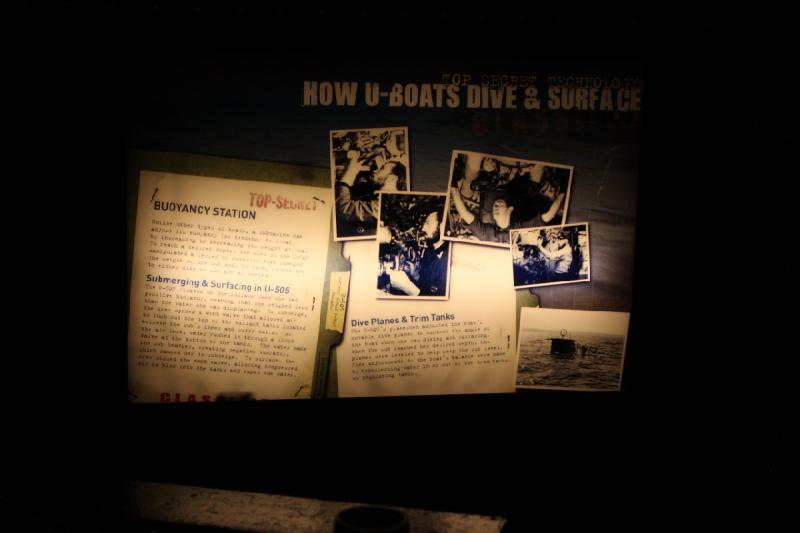 Album: German Submarines
Image: 352 / 473
File name: _mg_6930s.jpg
Date: 2014-03-11 09:53:48
Tags: Chicago, Illinois, Museum of Science and Industry, Submarines, Type IX, U 505 Buoyancy Station
Unlike other types of boats, a submarine can adjust its buoyancy (or tendency to float) by increasing or decreasing its weight at sea. To reach a desired depth, the crew of the U-505 manipulated a series of controls that changed the weight of the sub and, in turn, forced her to either dive or surface as needed.
Submerging & Surfacing in U-505
The U-505 floated on the surface when she had positive buoyancy, meaning that she weighed less than the water she was displacing. To submerge, the crew opened a vent valve that allowed air to rush out of the top of the ballast tanks located between the sub's inner and outer hulls. As the air left, water rushed in through a floot valve at the bottom of the tanks. The water made the sub heavier, creating negative buoyancy, which caused her to submerge. To surface, the crew closed the vent valve, allowing compressed air to blow into the tanks and expel the water.
Dive Planes & Trim Tanks
The U-505's planemen adjusted the boat's movable dive planes to control the angle of the boat when she was diving and surfacing. When the sub reached her desired depth, the planes were leveled to help keep the sub level. Fine adjustments to the boat's balance were made by transferring water in or out of the trim tranks, or regulating tanks. Exposure Time: 1/1600
Aperture: f/2.8
Sensitivity: 800 ISO
Focal Length: 40 mm
Make: Canon
Model: Canon EOS 40D
|